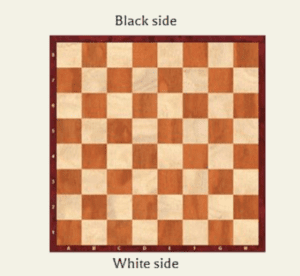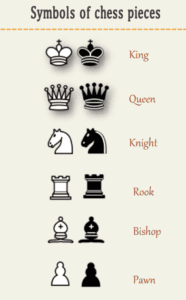- The rules of chess have evolved much over the centuries, from the early
chess-like games played in India in the 6th century. - For much of that time, the rules varied from area to area.
- The modern rules first took form in Italy during the 13th century, giving
more mobility to pieces that previously had more restricted movement
(such as the queen and bishop). - Such modified rules entered into an accepted form during the late-15th or
early 16th century. - The basic moves of the king, rook, and knight remain unchanged.
- Pawns originally did not have the option of moving two squares on their first move and when promoted by reaching the eighth rank, could become a queen only.

- Chess is played on a square board divided into 64 squares (eight-by-eight)
of alternating color. - No matter what the actual colors of the board, the lighter-colored squares
are called “light” or “white” and the darker-colored squares are called “dark”or “black”. - Sixteen White and sixteen Black pieces are placed on the board at the
beginning of the game. The board is placed so that a white square is in each
player’s bottom-right corner. - Horizontal rows are called ranks and vertical rows are called files.
- According to FIDE equipment standards, the length of side of a square
should be twice the length of the diameter of the base of a pawn.
